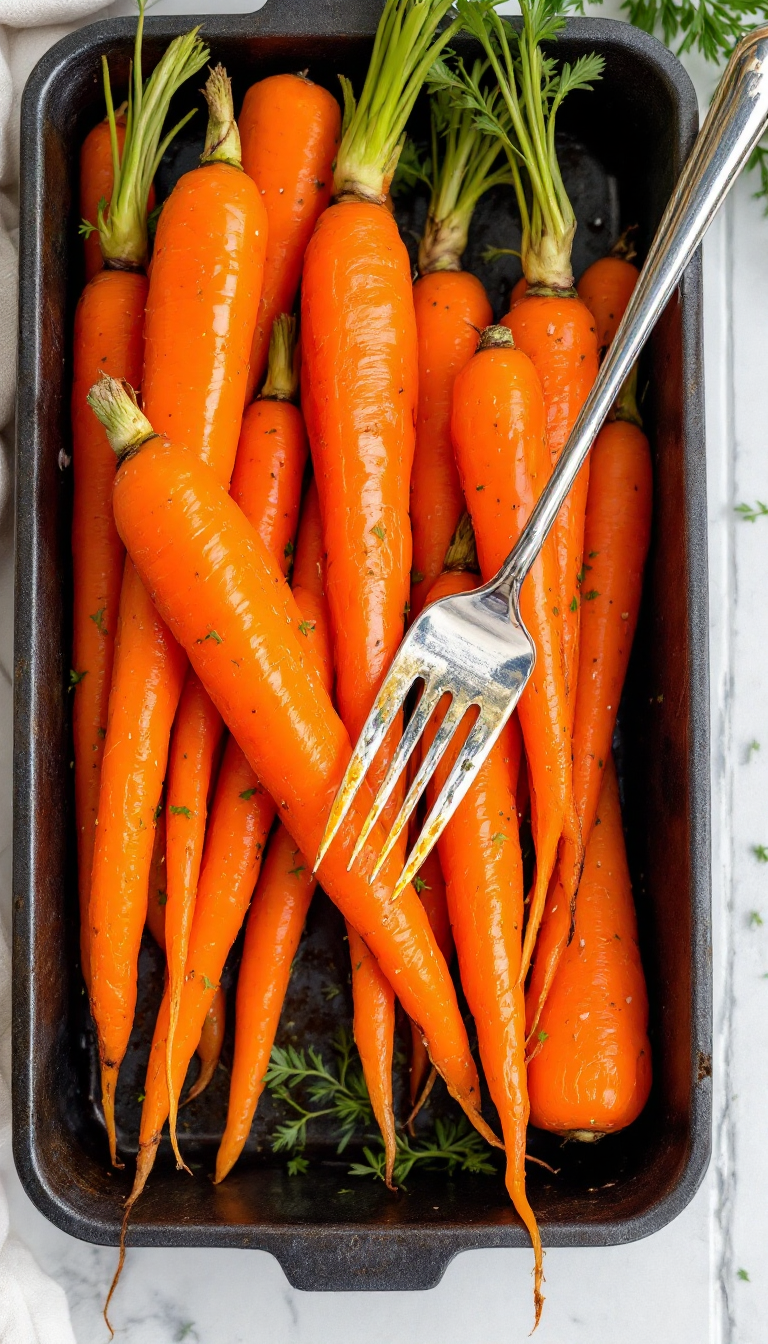
Ah, carrots—often the unsung heroes of the veggie world, but when done right, they’re pure magic on a plate. I remember the first time I tried sous vide carrots; it was like they’d been kissed by a culinary fairy. Their sweetness was amplified, with a tenderness that made me question everything I thought I knew about cooking vegetables.
Steps
- Begin by setting up a sous vide immersion circulator to heat a water bath to 183°F (84°C). Place the carrots, unsalted butter, sugar, and half a teaspoon of kosher salt into a vacuum-sealed bag, following the manufacturer’s instructions for sealing.
- Submerge the sealed bag in the preheated water bath and cook the carrots until they are fully tender, which should take about 1 hour. Once cooked, the carrots can be refrigerated for up to a week if not serving immediately.
- Transfer the contents of the vacuum bag to a heavy-bottomed skillet and heat over high temperature. Stir continuously until the liquid reduces to form a glossy glaze, approximately 2 minutes. If the glaze becomes oily, add water a teaspoon at a time and shake the pan to re-emulsify the glaze.
- Adjust the seasoning by adding salt and freshly ground black pepper to taste. If desired, mix in chopped parsley before serving for an added touch of freshness. Serve the glazed carrots warm as a flavorful side dish.

Ingredients
- 1 pound (454 g) baby carrots, peeled or scrubbed, or medium to large carrots, peeled and cut into 1-inch pieces
- 2 tablespoons (30 g) unsalted butter
- 1 tablespoon (12 g) sugar
- 1/2 teaspoon kosher salt
- Freshly ground black pepper, to taste
- 1 tablespoon (15 ml) chopped parsley (optional)
Nutritional Values
Calories: 276 to 414 | Fat: 16g | Saturated Fat: 8g | Cholesterol: 40mg | Sodium: 656mg | Carbohydrates: 32g | Dietary Fiber: 8g | Total Sugars: 24g | Protein: 4g | Vitamin C: 8mg | Calcium: 104mg | Iron: 4mg | Potassium: 728mg
FAQ
- What temperature should be used for sous vide carrots?
- For sous vide carrots, set the water bath to 183°F (84°C) to ensure they soften without becoming mushy.
- Why is sous vide a good method for cooking carrots?
- Sous vide cooking allows carrots to cook in their own juices, enhancing their natural sweetness and flavor. The method also ensures consistent cooking.
- Can other vegetables be cooked using the same sous vide method?
- Yes, vegetables like small onions, radishes, turnips, parsnips, and baby artichokes can be prepared using the same sous vide method as carrots.
- What should you do if the glaze becomes greasy during the final step?
- If the glaze becomes greasy, add water a teaspoon at a time while shaking the pan to re-form the glaze.
- How long can sous vide carrots be stored in the refrigerator after cooking?
- Once cooked, sous vide carrots can be stored in the refrigerator for up to one week.
Tips
- Ensure the water bath is preheated to exactly 183°F (84°C) to achieve the perfect tenderness for the carrots without them becoming mushy.
- If the glaze turns greasy while finishing the carrots in the skillet, add water a teaspoon at a time and shake the pan to bring back the shiny glaze.
- For variations, consider using the same recipe with other vegetables like small onions, radishes, or turnips, which also benefit from the sous-vide method.
- After cooking, if you’re not serving the carrots immediately, they can be stored in the refrigerator for up to one week, making them a convenient make-ahead option.
Equipment
- Sous Vide Immersion Circulator – Essential for maintaining the precise temperature required for sous vide cooking.
- Vacuum Sealer – Used to seal the carrots, butter, sugar, and salt in a vacuum bag for cooking.
- Vacuum Sealer Bags – Necessary to hold the ingredients during the sous vide process.